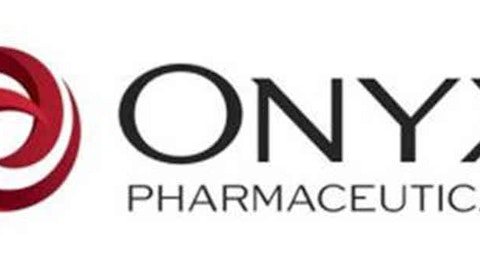The U.S. is the largest market of biotechnology products in the world. There are more than 1,300 companies involved in the research and development of drugs, vaccines for cancer, infectious diseases, auto-immune conditions, HIV/AIDS, and other inflammatory diseases like asthma and arthritis. The total U.S. biotech market is expected to grow at an annual growth rate of 13.6% from 2009 to reach $22.8 billion in 2014. To achieve long term momentum, companies are involved in expanding their existing portfolio by developing new drugs.
Three companies are focused on long-term growth. Analysis shows how these companies will generate revenue in the future, but how will investors benefit?
Development of a new drug Zerenex
Hyperphosphatemia occurs when there is high phosphate content in the blood in end-stage renal disease, or ESRD, patients. These patients need treatment consisting of a phosphate-binding agent that will help reduce and retain the level of phosphorus. Several phosphate binders have been used before, but they are associated with some side-effects and disorders.

Iron deficiency anemia develops in patients with non-dialysis dependent -chronic kidney disease, or NDD-CKD. This deficiency may lead to fatigue, poor quality of life, and problems associated with cardiovascular complications. At present, there is no oral iron supplement approved by the FDA to treat iron deficiency anemia in NDD-CKD patients. Due to FDA warnings, ‘IV iron’ and Erythropoiesis-Stimulating Agents, or ESA, are not frequently used for CKD patients due to cardiovascular risks.
To overcome the iron deficiency, Keryx Biopharmaceuticals (NASDAQ:KERX)’s Zerenex is in Phase 2 testing for managing the phosphorous level and iron deficiency in patients with NDD-CKD. Keryx’s Zerenex could become the very first phosphate binder for non-dialysis CKD patients in the U.S. In the trials Zerenex used 24% less ESA and 52% less of IV-iron. This would help the company to see $750 million in annual dialysis savings in the U.S.
New drug for lung cancer and blood cancer
Infinity Pharmaceuticals Inc. (NASDAQ:INFI) is developing an oral solution, ‘IPI-145,’ that contains phosphoinositide-3-kinase, or PI3K, delta and PI3K gamma. The PI3K-delta and gamma fights against lymphoma, a type of blood cancer, and inflammatory diseases like asthma and arthritis.
The Phase 1 study was mainly based on indolent non-hodgkin lymphoma, or iNHL, patients. The study conducted on 19 patients, observed a response rate of 68% in iNHL patients. It also showed positive results on a wide range of other types of blood cancer.
The company will initiate Phase 2 study this year. Infinity Pharmaceuticals Inc. (NASDAQ:INFI) is expecting FDA approval in early 2016. IPI-145 has an opportunity to become a blockbuster drug with a market of $22 billion for rare blood cancer drugs. The company projects peak sales of $1 billion for IPI-145.
Infinity Pharmaceuticals Inc. (NASDAQ:INFI) is also developing combinations of ‘IPI-504’ with retaspimycin hydrochloride, or HCI, a novel heat shock protein 90, Hsp90, and docetaxel, an anticancer agent for non-small cell lung cancer, or NSCLC, patients with a smoking history. This combination will kill cancer cells.
The Phase 1b trails were based on 23 NSCLC patients who were given the combination of retaspimycin HCI, and docetaxel. The study observed overall response rate was 26%. A higher overall response rate of 43% was observed in the patients with a history of heavy smoking.
The global NSCLC market is expected to grow at an annual rate of 13.26% over the period 2012-2016, and it will grow from $4 billion in 2009 to $6.5 billion by 2019. With the launch of IPI-504, Infinity Pharmaceuticals Inc. (NASDAQ:INFI) expects $54.88 million in 2017 and $174 million in 2018.
Blockbuster drug for GBM
Celldex Therapeutics, Inc. (NASDAQ:CLDX) is developing a drug that contains a toxic chemo therapy to attack cancer cells with glycoprotein NMB, or GPNMB, protein in triple-negative breast cancer, or TNBC, patients.
The company’s experimental drug ‘CDX-011’ showed a positive results in the study conducted on 122 TNBC patients with GPNMB. Patients who were given CDX-011 showed a reduction of 19% in their tumors. Patients with high GPNMB showed a high response rate of 32% and overall survival and progression free survival, or PFS, of 10 months. The company plans to target patients with high GPNMB for whom the drugs works the best. Celldex Therapeutics, Inc. (NASDAQ:CLDX) expects FDA approval in the middle of 2016.
With approval and a commercial launch, it is expected that CDX-011 will generate $5.27 million in 2016 and $46.43 million in 2017. It also expects peak sales of $700 million in TNBC in the coming years.
Celldex Therapeutics, Inc. (NASDAQ:CLDX) is currently developing an anticancer vaccine, ‘Rindopepimut,’ for glioblastoma multiforme, or GBM, a form of brain cancer. Rindopepimut, also known as CDX-110, targets a tumor specific gene, a major tumor growth promoter.
CDX-110 has shown positive results in Phase 2 ACT 3, in patients diagnosed with an aggressive form of brain cancer, Epithelial Growth Factor Receptor mutant variant III, or EGFRvIII. The study showed 26% overall survival, with a median survival of 21.8 months, based on 65 patients. The company expects FDA approval in 2016.




